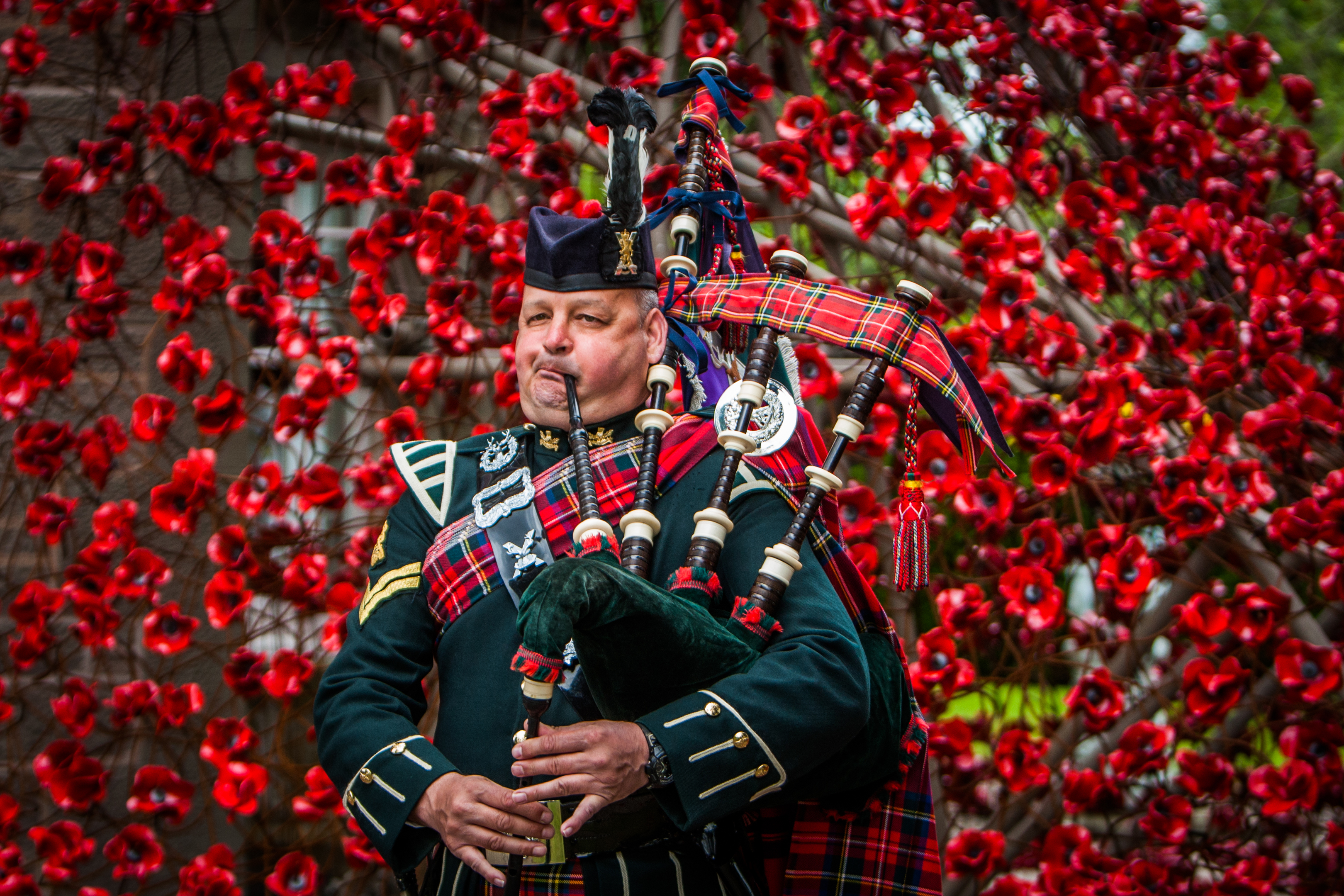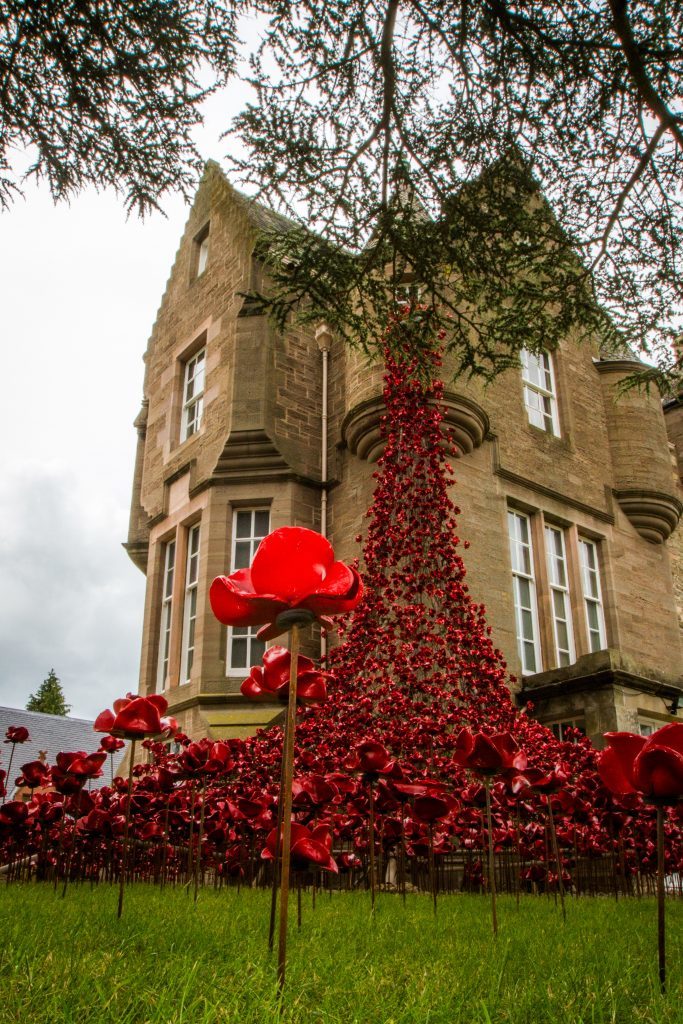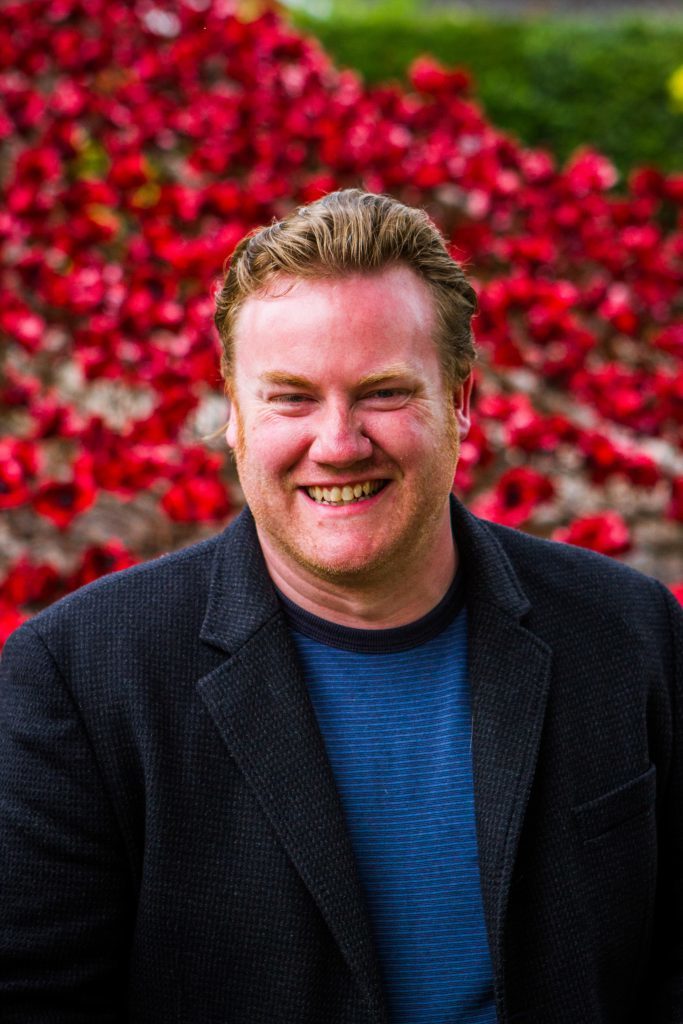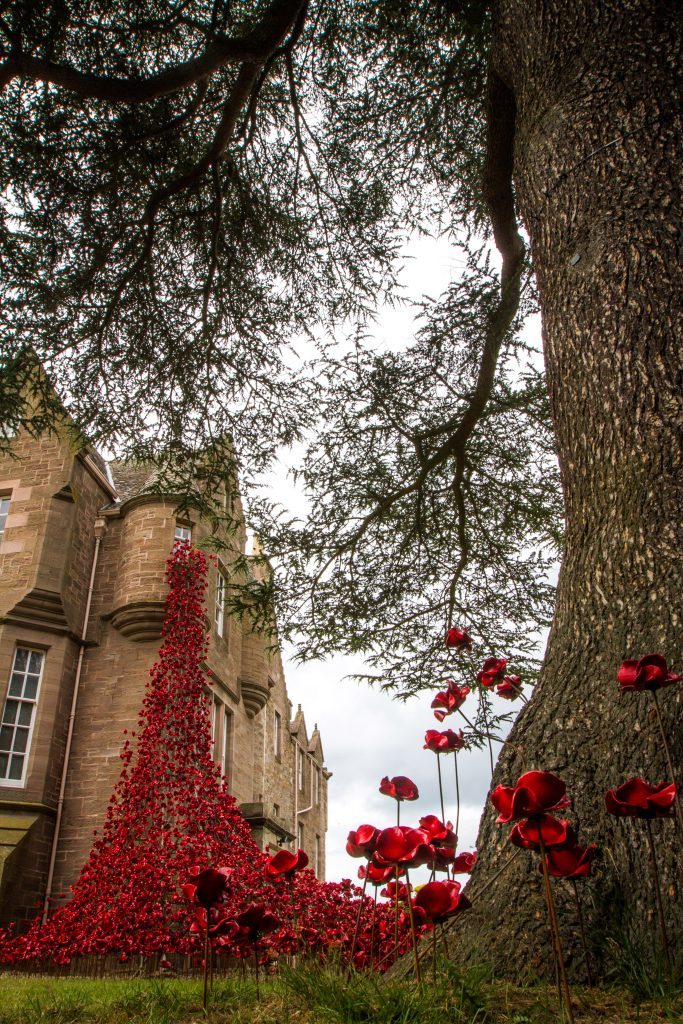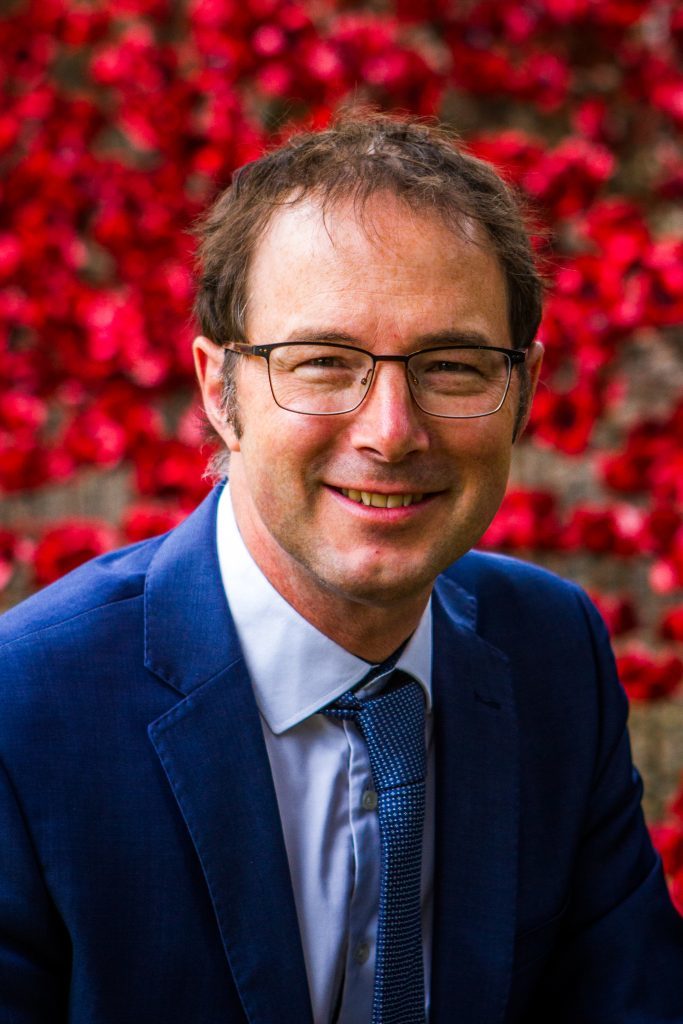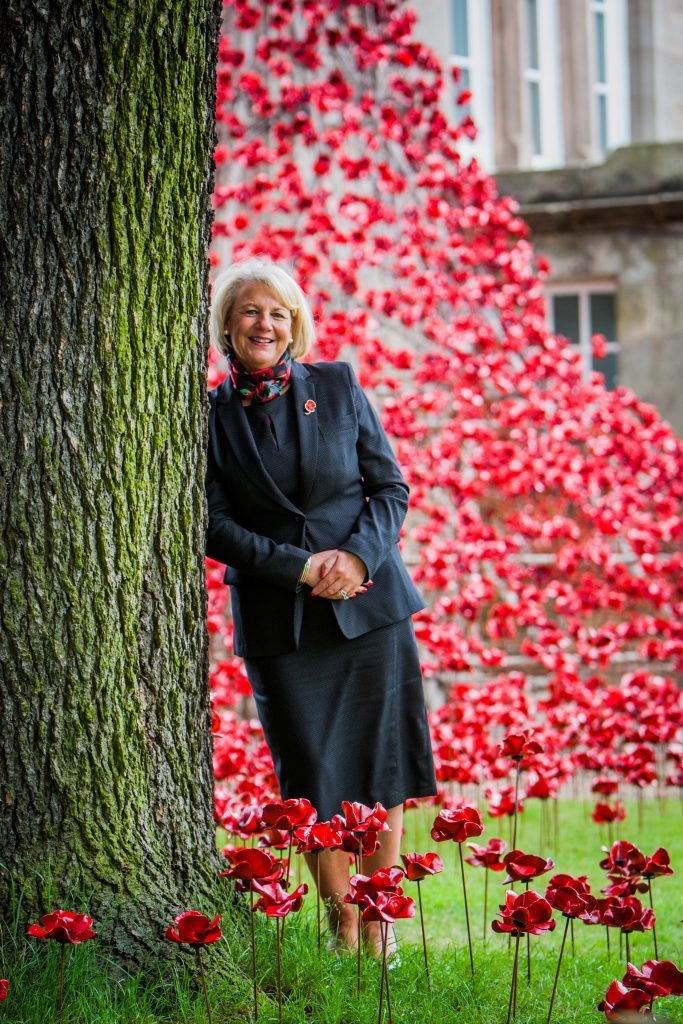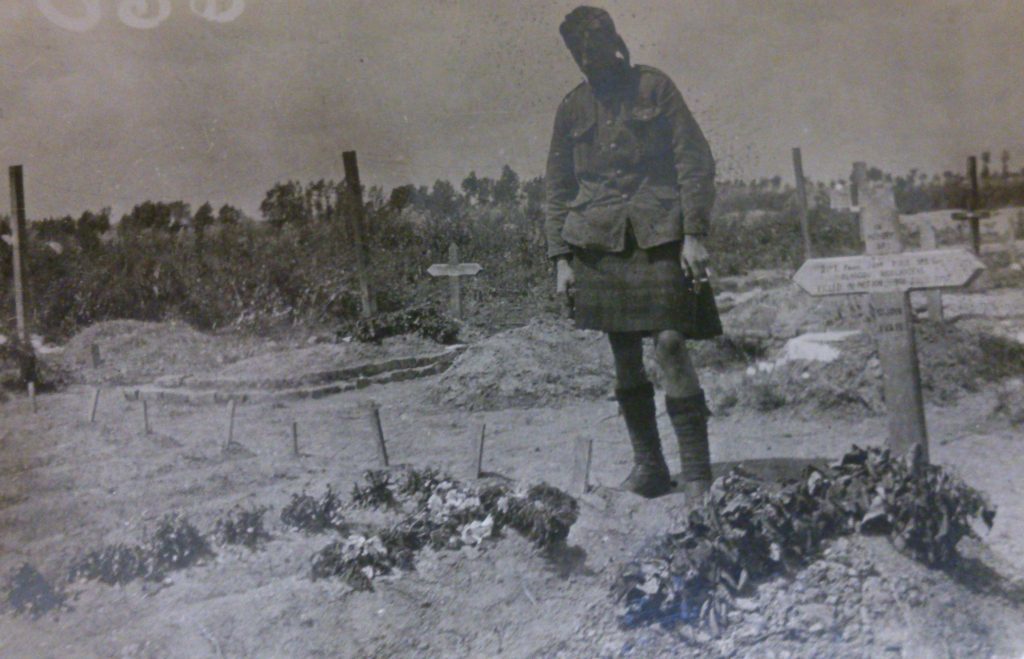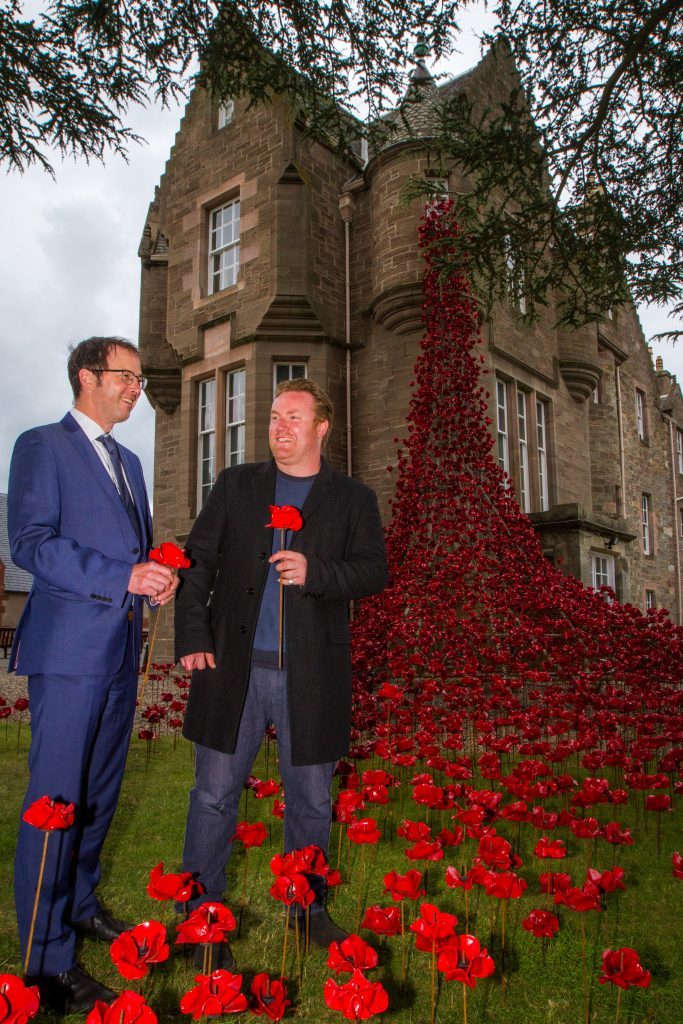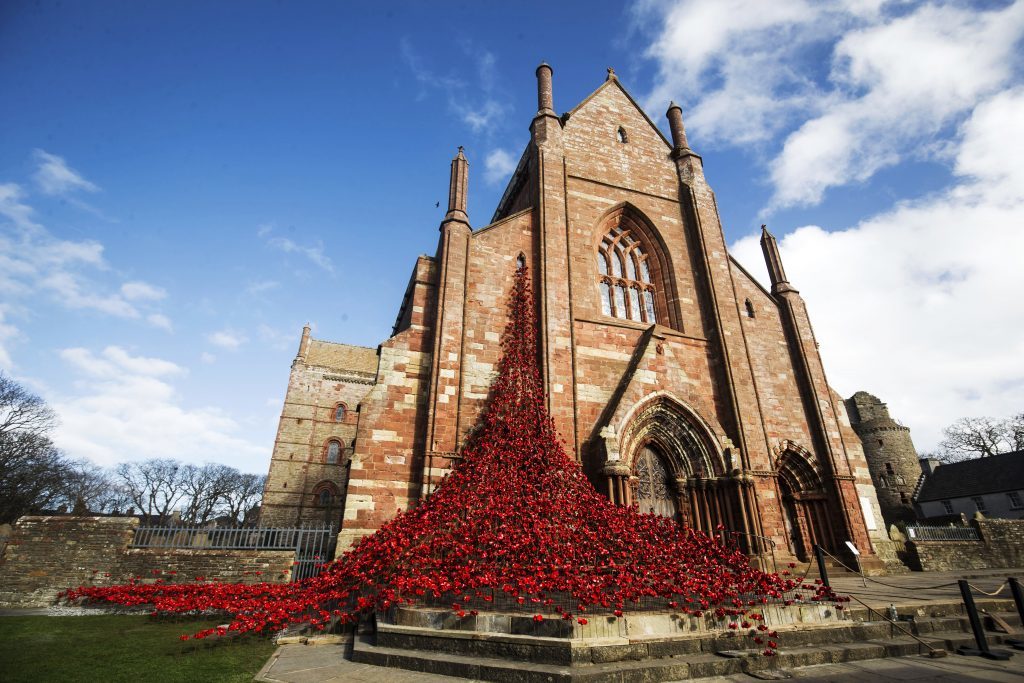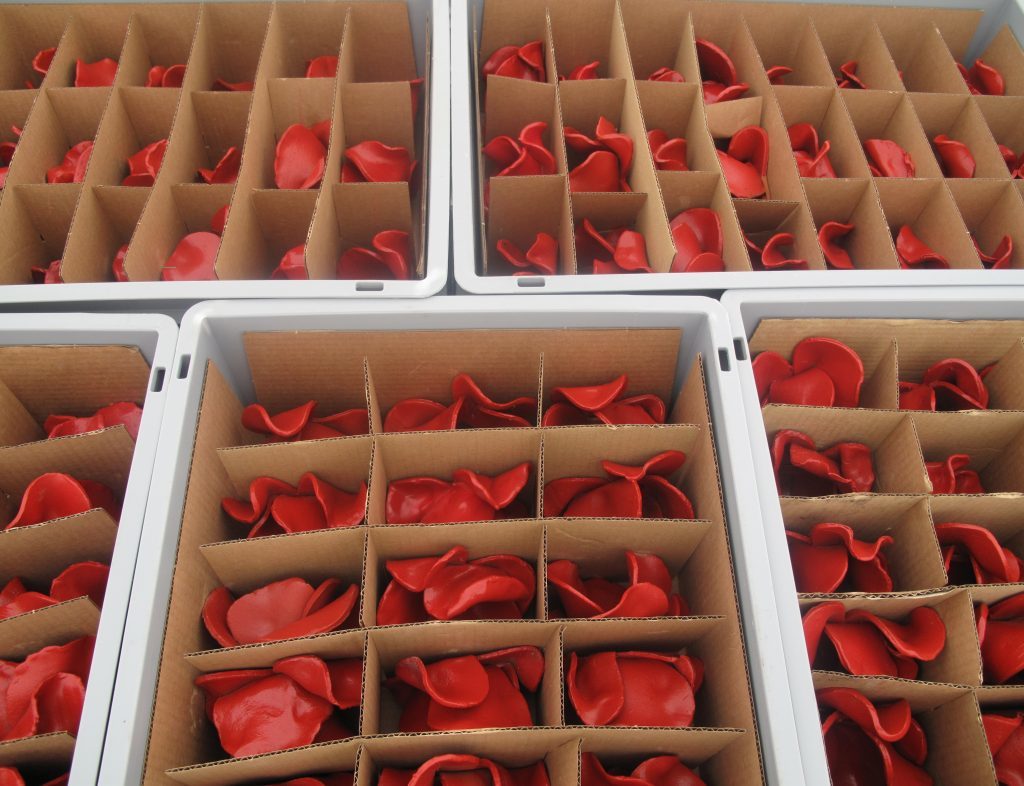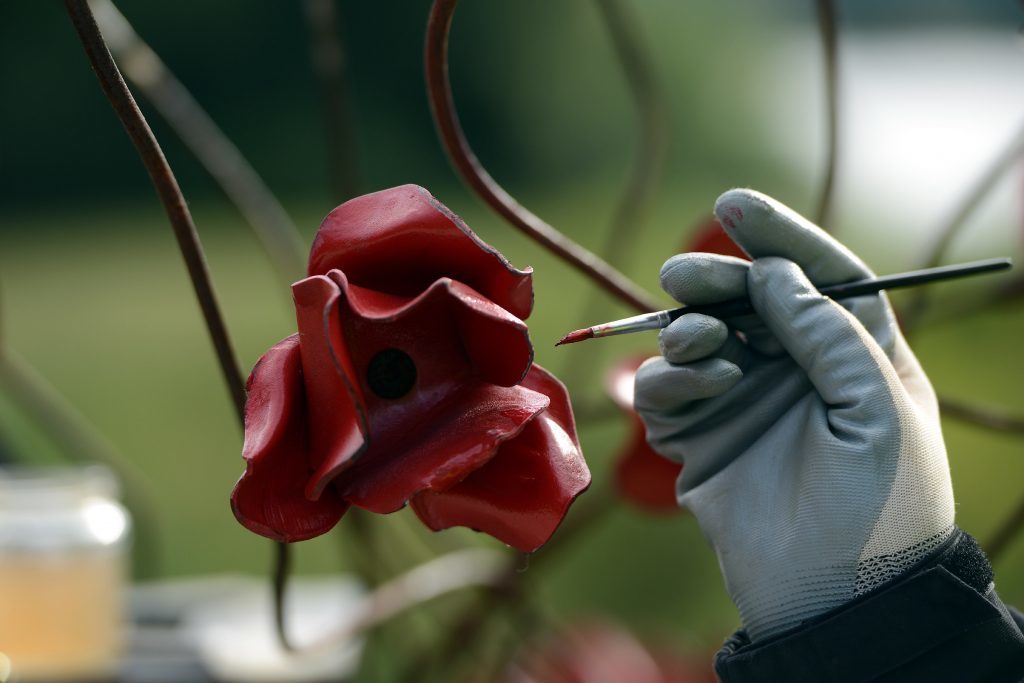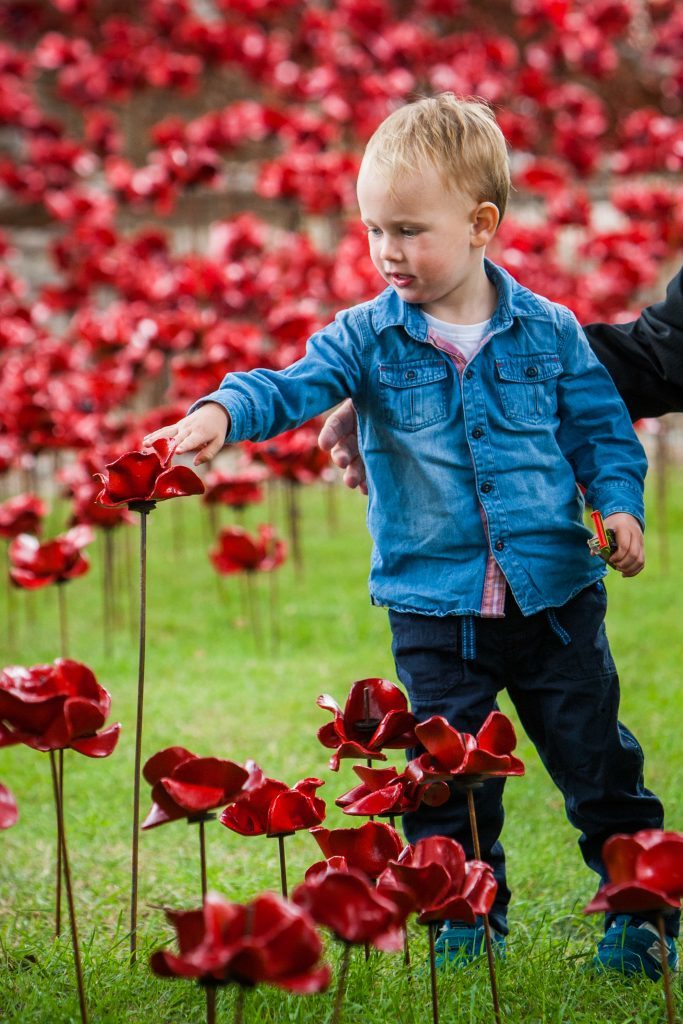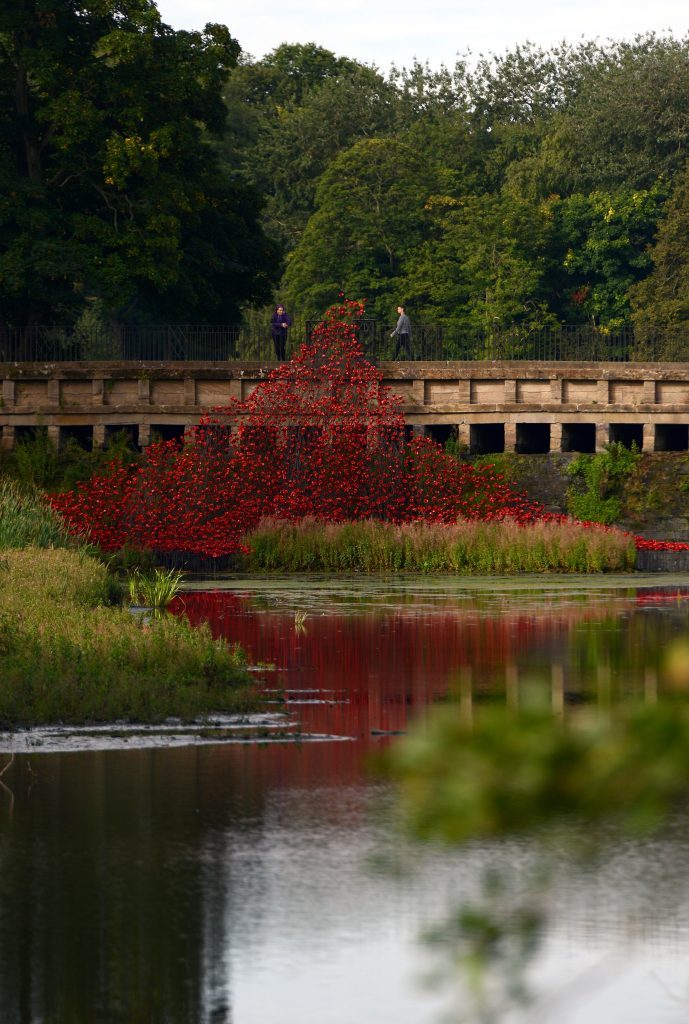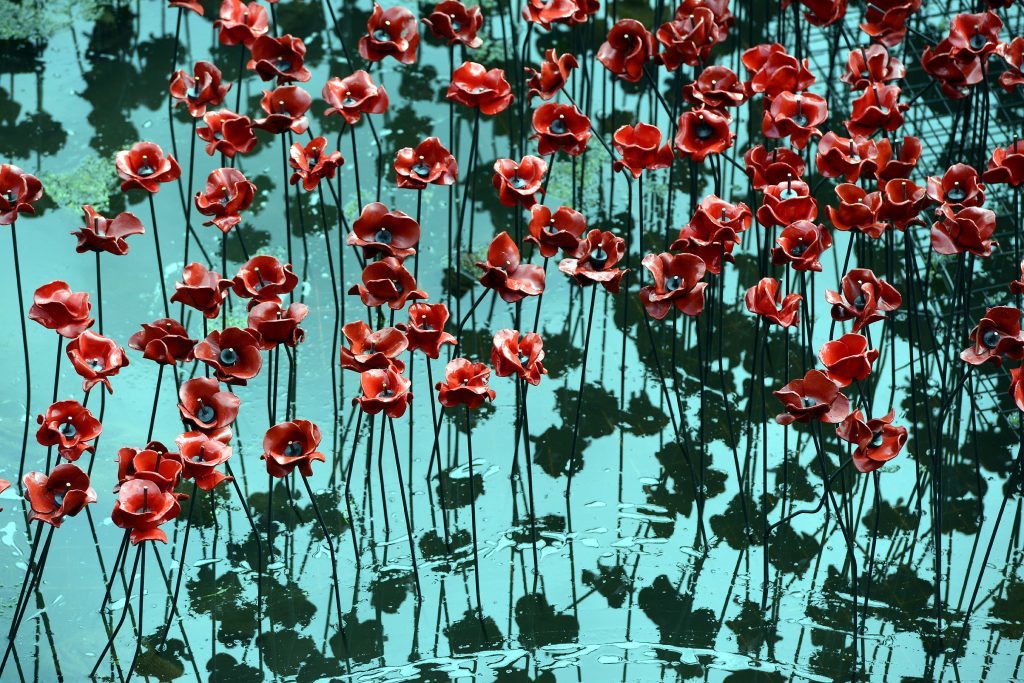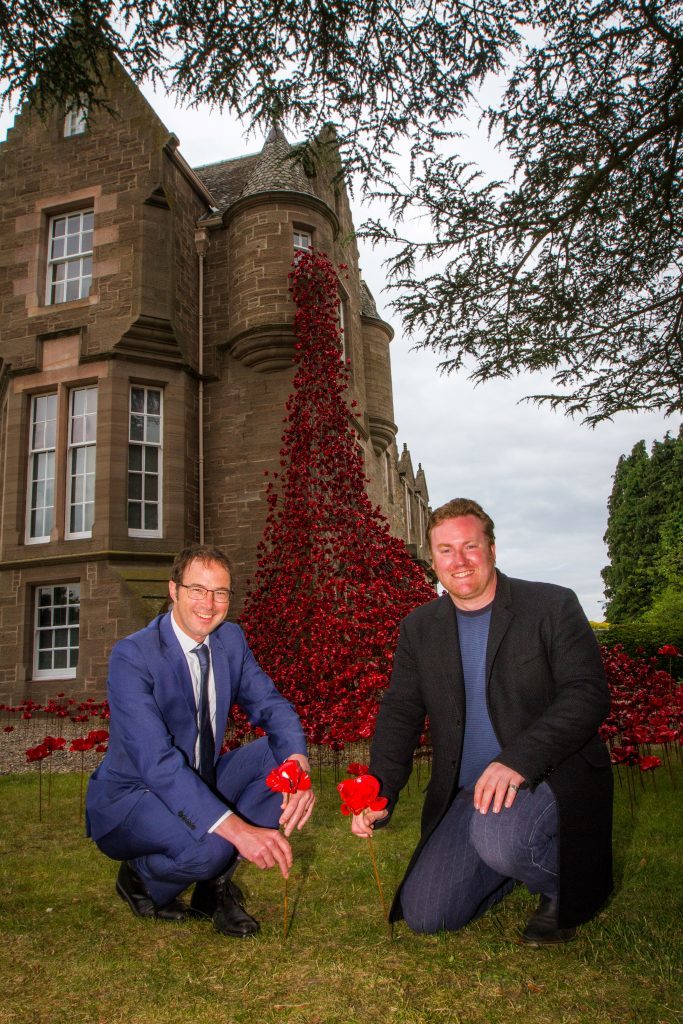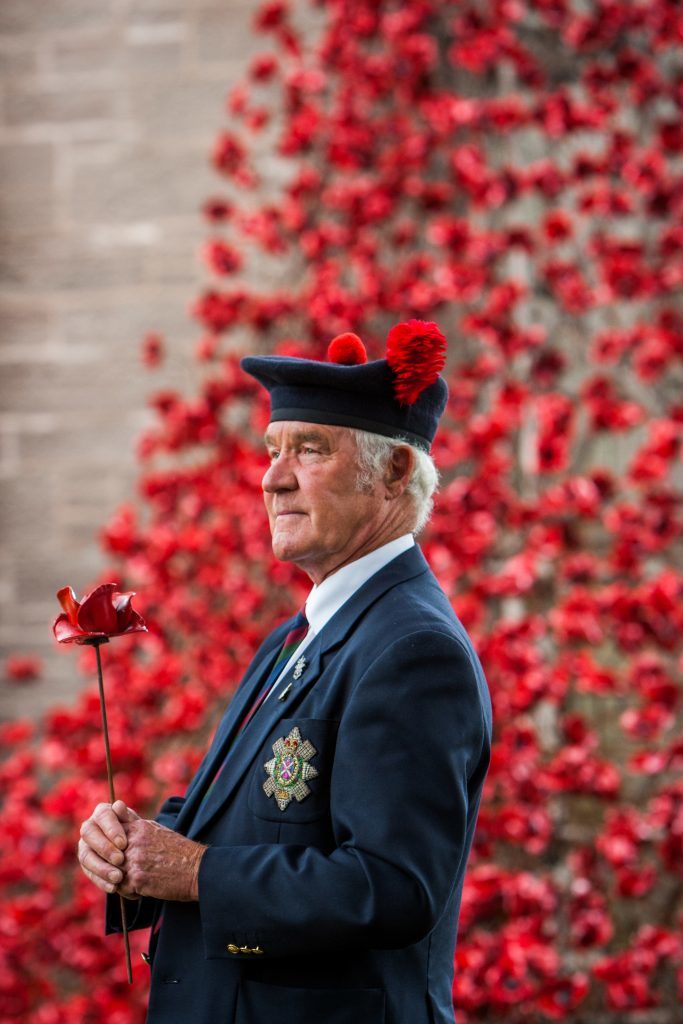As Poppies: Weeping Window arrives at The Black Watch Museum and castle in Perth, Caroline Lindsay finds out more about this iconic and emotive piece of public art and what it means for Courier Country and beyond
A myriad of poppies cascades from a turret window at the Balhousie Castle in Perth, symbolising the blood shed by the 9,000 Black Watch soldiers who made the ultimate sacrifice in the First World War, and the tears wept by their families then and now.
Poppies: Weeping Window, a poignant sculpture comprising several thousand hand made ceramic poppies, was part of the spectacular and moving public art installation Blood Swept Lands and Seas of Red at the Tower of London in 2014.
Now touring the UK, it has just arrived at Perth’s Black Watch Castle and Museum – the only venue on mainland Scotland to host the sculpture – and is expected to attract visitors from all over the world.
Venues all over the country have jostled to display the sculptures and only a handful have been selected, so it was a dream come true for The Black Watch Castle and Museum in Perth when, following a strict selection process, they were chosen. After a poignant opening ceremony on June 29, Poppies: Weeping Window opened to the public on Thursday.
But to fully understand the enormous significance and poignancy of Poppies: Weeping Window, we need to wind back a few years to where it all began.
One day Paul Cummins, a ceramic artist from Derbyshire, was browsing in his local library and came across the lines: “The blood swept lands and seas of red, where angels fear to tread…” in the will of a soldier who died in the First World War.
He instantly knew he could create something special – but had no idea just how momentous it would become.
“I came across the will by accident,” Paul recalls. “Because I’m a colour associated dyslexic I see things in a different way to everyone else, because words to me are colour. The words in the will conjured up the sea of blood the soldier was surrounded by in the battlefield and it just clicked with me. I knew I could build on it.”
Paul is known for his striking landscape sculptures of glazed flowers set in the grounds of stately homes like Castle Howard and Blenheim Palace, and also created an installation for the London 2012 Cultural Olympiad.
With something similar in mind to commemorate the centenary of the First World War, he contacted the Commonwealth War Graves Commission to see how many people had died at the front.
“It came to 888,246 so I had an idea to create a single poppy for every single British or Colonial serviceman who had died in the First World War,” he explains.
Three hundred people worked tirelessly night and day for nine months to make the poppies and in a setting created by Tom Piper, an award-winning theatre designer, exactly 888,246 ceramic poppies progressively filled the Tower’s moat between July 17 and November 11, creating a powerful visual commemoration of the centenary.
Although the iconic landmark, which was visited by millions from around the world, has since been dismantled and poppies sold to raise thousands of pounds for six military charities, both Weeping Window and Wave – a sweeping arch of bright red poppy heads suspended on towering stalks – which together comprise more than 10,000 poppies, have been preserved by the nation and gifted to 1418 NOW (the major cultural programme for the First World War) and Imperial War Museums.
Anne Kinnes, CEO of The Black Watch Castle and Museum, feels incredibly honoured to be hosting the installation and describes the selection process.
“We were asked by Perth and Kinross Council if we’d be interested in applying to host Poppies: Weeping Window, so we sent a written application to 1418 NOW outlining why it should come to us, why it was relevant to us, and how we intended it to engage with the public. Our first application was unsuccessful but the following year we were shortlisted and we started to get our hopes up.
“When the call came to say we’d been successful we were overwhelmed by emotion – just talking about it now is giving me goose pimples!”
The Museum’s application pivoted on two factors. “Most importantly we’re a military museum – just short of 9,000 Black Watch soldiers were killed in the First World War and if we can give something back to both those who made the ultimate sacrifice, and those who fought, that is a wonderful thing. Weeping Window is an incredibly emotive and poignant memorial for the families of the soldiers – something tangible for them to visit and remember.
“Secondly my background is in tourism and here at the Black Watch Museum we aim to offer a world-class service, so to have the opportunity to deliver something like this, a symbol of remembrance of national and international significance, to mainland Scotland, to this beautiful part of the country and to the heart of Black Watch recruiting area, is amazing.”
She admits that once the good news had started to sink in, nerves got the better of her.
“I started thinking: ‘Oh my goodness me, how are we going to deliver this?’ The importance of the whole thing and the impact it would have on the area suddenly hit me – but in a very good way!” she recalls.
“The team feel incredibly honoured to have Weeping Window here, and we’re also really grateful to our Poppy Partners – 120 volunteers from all over Scotland, aged between 16 and 82, who are giving up their time to help visitors to the sculpture get the most from the experience.”
The installation travelled to Perth from Orkney – where it had been on display at St Magnus Cathedral in Kirkwall during the Battle of Jutland commemorations in May – transported in a 40 foot truck, where the poppies are stored in cases similar to ones used for wine glasses.
It takes around a week for the breathtaking sculpture to be assembled by the production team from 14-18 Now: first, scaffolding had to be erected, which incorporates a network of pre-assembled poppies on the upper section, and then each individual six-petalled poppy had to be carefully bolted to fill the lower part of the frame. The poppies, handmade from terracotta clay by 300 volunteers, measure around six inches in diameter, have been painted and then varnished to help them survive the elements.
Completed and set against the backdrop of the castle’s mellow stone, Poppies: Weeping Window, a myriad of thousands of poppies, spills out of the Wavell Room turret window, over gravel and grass, and flows to a stop just in front of a large tree.
Anne explains why this particular window, which can clearly be seen from Perth’s North Inch, was chosen: “We had a long chat with the artist, designer and the installation team about where we might like to position the cascade, where would work and where wouldn’t, and where would have the biggest impact.
“The opening ceremony on June 29 was incredibly poignant and evocative,” she says. “We tried to make it both relevant from a military point of view but also so that everyone could relate to it. After all, these poppies represent all the men who gave their lives so that we can live the way we do today.”
Both Paul Cummins (who lost a finger during the poppy-making process when his hand was caught in a clay rolling machine) and Tom Piper attended the opening ceremony and are delighted Weeping Window has come to Perth.
“We need to look after our history and The Black Watch has such an important association with the First World War,” Paul reflects.
“I felt proud and emotional when I saw people’s reactions to it. I know what it looks like, I know what to expect but it looks different in every setting. For a piece of art to be well received it has to feel alive and needs the emotion to go with it. The people, the location – they all make it work.”
Like Paul, Tom can only marvel in disbelief at the way the whole project has captured the imagination of people all over the world. In fact, he admits that at the outset he simply treated it like a piece of theatre design.
“I thought at first that we could install it in three weeks but it soon became obvious that, with such a huge number of poppies, it would take much longer, and it was then that the project started taking on real significance.
Tom, who has worked with theatres in Scotland including Dundee Rep, knew exactly what he wanted to create with the design of Weeping Window. “My aim was to give the whole piece a beautiful narrative of blood seeping out of the tower.
“Between the two of us Paul and I have continued the central idea from the Tower of London, and the locations we’ve chosen to go to with Weeping Window and Wave still represent the metaphor of the blood, and the sense of loss of life and spirit.
“Weeping Window has to cascade from something and for the metaphor to work it has to be a building – weeping blood and tears. Each new place has really taken it to its heart and explored in its own way and although we always use the same number of poppies, the shape and spill can change and respond to each building while remaining the same piece in essence.
“Because the previously manicured lawns of some locations can’t be mown while the installation is in situ, the grass and wild flowers start growing up through it and embedding it into the landscape,” he says approvingly.
“The Black Watch has such a strong resonance with military suffering but I’m still touched and amazed by the power that a piece of art can have.”
Poppies: Weeping Window by Paul Cummins, artist and Tom Piper, designer, runs at The Black Watch Castle and Museum, Perth, until September 25 2016. Entry free. There will also be a series of events at The Black Watch Museum to run alongside the installation to give visitors the opportunity to reflect, remember and commemorate those who have lost their lives or have been affected through war and conflict.
www.blackwatch.co.uk and www.1418now.org.uk
